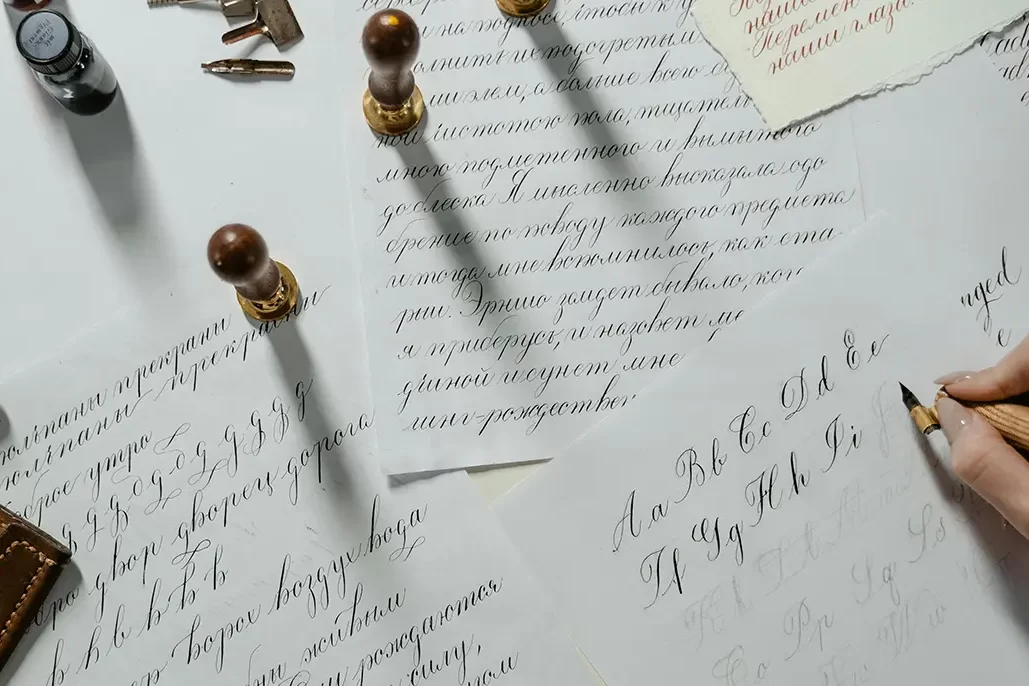In an age where digital design often dominates, the art of handcrafted calligraphy is experiencing a noteworthy revival, particularly in Scotland.
This resurgence is not just about preserving a traditional skill but is also a celebration of cultural identity.
Here, we will explore how Scottish typography, renowned for its unique styles and historical significance, is making a significant impact on modern branding and design.
The Roots of Scottish Calligraphy
Scottish calligraphy has a rich heritage that dates back centuries, closely linked with the nation’s history and artistic evolution. From the ornate manuscripts preserved in ancient monasteries to the bold lettering seen on public monuments, the influence of Scottish typography can be traced through various periods and styles. Today, these historical influences are being revisited and reimagined to meet contemporary tastes and applications.
Embracing Tradition in Modern Design
The revival of handcrafted typography in Scotland is not merely about nostalgia; it’s about creating a distinctive voice in a globalised market. Brands and designers are increasingly turning to these traditional techniques to stand out. Handcrafted Scottish typography offers a human touch that digital fonts cannot replicate, providing designs with a personal, artisanal quality that appeals to consumers seeking authenticity.
Techniques and Tools
Traditional Scottish calligraphy utilises a variety of tools and techniques that have been handed down through generations. The use of quills, brushes, and nib pens, along with natural inks, allows for a range of expressive possibilities that modern tools often fail to capture. Workshops and courses on Scottish calligraphy are becoming more popular, helping to keep these skills alive and relevant. These classes not only cover the technical aspects of calligraphy but also inspire a sense of its historical and cultural significance.
Application in Branding and Marketing
For brands looking to convey craftsmanship, heritage, or luxury, Scottish typography can be a key element of their visual strategy. The bespoke nature of handcrafted lettering means that each piece is unique, which can enhance the branding of luxury goods, bespoke products, and artisanal creations. Additionally, incorporating elements of Scottish calligraphy into logos, packaging, and advertising campaigns can add a layer of depth and storytelling that resonates with a target audience.
The Impact on Global Design
The revival of Scottish calligraphy is not confined to local markets; it has implications for global design trends as well. As international brands strive to localise their products and marketing efforts, employing traditional elements like Scottish typography can make a brand feel more accessible and authentic to a Scottish audience. Moreover, the global design community is increasingly appreciative of cultural authenticity, which elevates the appeal of traditional Scottish calligraphy even further.
Looking Forward
As we move forward, the blend of historical craftsmanship with contemporary design continues to enrich the creative landscape. For businesses and designers, embracing the revival of Scottish typography offers a way to differentiate their offerings and connect more deeply with their audiences.
Stand Out in the Market with Taesea’s Innovative Solutions
If you’re interested in learning more about how Taesea can assist your business in developing your brand, marketing, and design requirements, please do not hesitate to contact us. We have a team of experts who are passionate about creating innovative and effective solutions that will help your business stand out in the market. Contact us today to learn more about our services and how we can help your business succeed.
Photo by MART PRODUCTION






